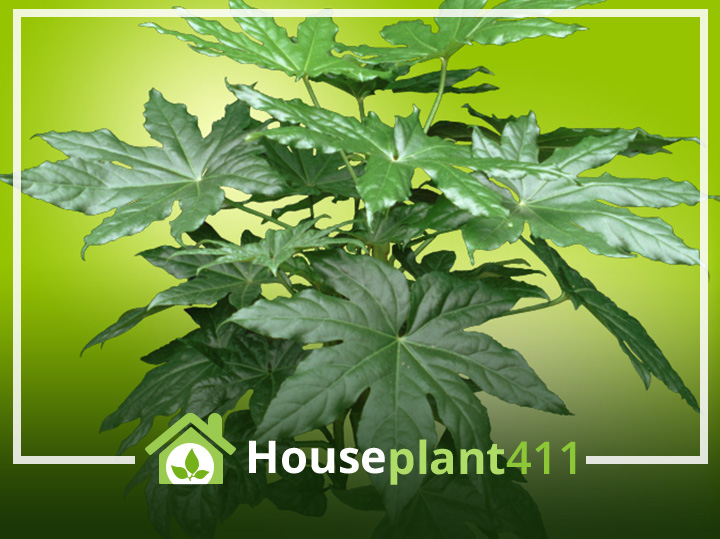A Fatsia plant, also called a Fatsia japonica, or Japanese aralia, originated in the sub-tropic forests of Japan, Korea, & Taiwan. Fatsia plants are a type of evergreen that can be grown both indoors and outdoors in frost-free areas. A Fatsia plant has shiny, leathery, medium green palmate (hand-shaped) leaves that grow at the ends of stiff stems. Fatsia japonica is a compact, upright plant that, even when grown as a houseplant, can reach 6ft in height. Prune a Fatsia japonica aggressively to keep the growth under control and the shape attractive. Watch out for powdery mildew when the humidity is high.
Plant Care
Light
A fatsia does well in bright filtered light. If you move it outdoors in the spring and summer, be sure to keep it in the shade.
Water
Allow the top 50% of the soil to dry out before watering, the leaves may even start to droop a little. Brown brittle leaves indicate under-watering. Soft leaves that turn yellow and fall off indicate over-watering.
Fertilizer
Use a well-balanced liquid plant food every other week in the spring and summer diluted to 1/2 the recommended strength.
Temperature
A Fatsia likes cool temperatures, especially in the winter when it is resting. It does well in temperatures between 45°-55°F (7.2°C-12.8°C) in the winter and never above 70°F (21.1C) during the rest of the year.
Humidity
This plant likes medium to high humidity
Flowering
When used as an indoor plant, a Fatsia rarely gets the tiny white blooms found on it when it grows outdoors. Black berries usually follow flowers.
Pests
Fatsia plants attract spider mites, mealy bugs, scale, and aphids.
Diseases
Since this plant likes medium to high humidity, powdery mildew may develop on the leaves. Provide good air circulation and try to keep the leaves dry.
Soil
Use a light, rich, fast draining potting soil.
Pot Size
These plants need fairly large pots in order to reach to an impressive size. Always provide good drainage.
Pruning
Keep a fatsia plant small & manageable or large and elegant with regular aggressive pruning in the spring. Pinch back the growing tips to encourage the plant to branch out and become bushier.
Propagation
Propagate using stem tip cuttings in spring.
Poisonous Plant Info
A Fatsia is non-toxic plant.
FAQ
Your Fatsia would love it. Be sure to keep it in the shade and move it back indoors before temperatures go below freezing.
Fatsias are prone to spider mites which produce the webbing you see, especially when the air is very dry. Spray all parts of the plant with the green solution and try to increase the humidity in the room.
No it won’t. Fatsias need to be aggressively trimmed in the spring to keep them full, shapely, and upright.
Once fatsia leaves badly droop it’s very hard to get them back to their original position. You may have to get a small stake and tie them up. Eventually, the leaves may stay in the upright position on their own.
I, personally, don’t recommend misting. Keeping the leaves wet encourages a disease called powdery mildew, which is just one more problem you’ll have to deal with. I’d suggest putting a small humidifier near your plant or sitting it on a bed of wet gravel. Be sure the Fatsia is sitting on the rocks not in the water.

